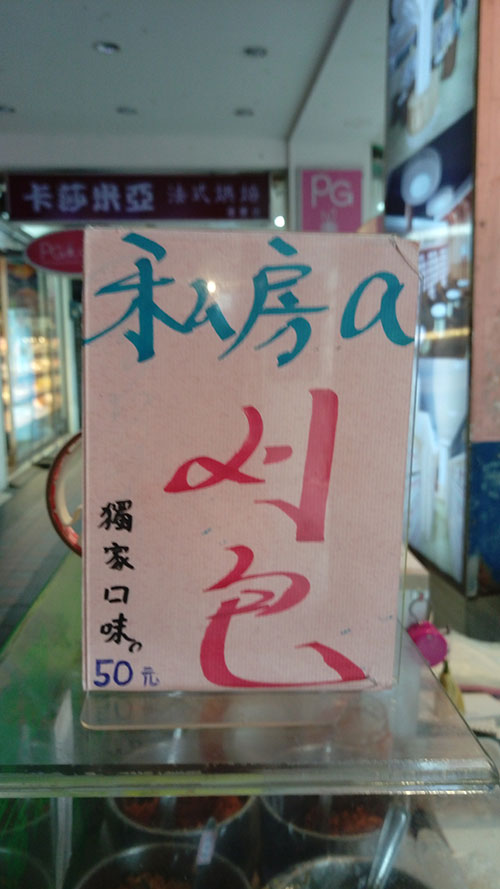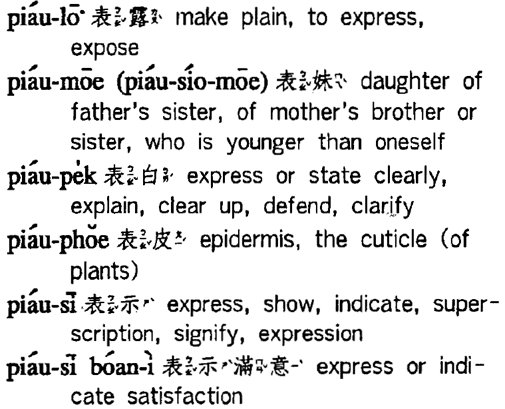 It’s time for another installment of Government in Action.
It’s time for another installment of Government in Action.
What you see to the right is something the Taipei County Government (now the Xinbei City Government, a.k.a. the New Taipei City Government) set into action: the Hanyu Pinyin spelling of “Danshui” is being replaced on official signage, including in the MRT system, by the old Taiwanese spelling of “Tamsui.” I briefly touched upon the plans for “Tamsui” a few months ago. (See my additional notes in the comments there.)
I have mixed feelings about this move. On the one hand, I’m pleased to see a representation of a language other than Mandarin or English on Taiwan’s signage. “Tamsui” is the traditional spelling of the Taiwanese name for the city. And it hardly seems too much for at least one place in Taiwan to be represented by a Taiwanese name rather than a Mandarin one.
On the other hand, the current move unfortunately doesn’t really have anything to do with promoting or even particularly accepting the Taiwanese language. It’s not going to be labeled “Taiwanese,” just “English,” which is simply wrong. It’s just vaguely history-themed marketing aimed at foreigners and no one else. But which foreigners, exactly, is this supposed to appeal to? Perhaps Taiwan is going after those old enough to remember the “Tamsui” spelling, though I wonder just how large the demographic bracket is for centenarian tourists … and just how mobile most of them might be.
So it’s basically another example — retroactively applied! — of a spelling that breaks the standard of Hanyu Pinyin and substitutes something that foreigners aren’t going to know how to pronounce (and the government will probably not help with that either): i.e., it’s another “Keelung” (instead of using “Jilong”), “Kinmen” instead of “Jinmen,” and “Taitung” instead of “Taidong.”
A key point will be how “Tamsui” is pronounced on the MRT’s announcement system. (I haven’t heard any changes yet; but I haven’t taken the line all the way out to Danshui lately.) The only correct way to do this would be exactly the same as it is pronounced in Taiwanese. And if the government is really serious about renaming Danshui as Tamsui, the Taiwanese pronunciation will be the one given in the Mandarin and Hakka announcements as well as the English one. Moreover, public officials and announcers at TV and radio stations will be instructed to say Tām-súi rather than Dànshuǐ, even when speaking in Mandarin.
Fat chance.
But, as years of painful experience in this area have led me to expect, my guess would be that the announcements will not do that. Instead, it will be another SNAFU, with a mispronunciation (yes, it is almost certain to be mispronounced by officialdom and those in the media) being labeled as “English”.
Of course, there’s nothing wrong about saying “Tām-súi.” But it’s a pretty safe bet that isn’t going to happen: the name will likely be given a pronunciation that a random clueless English speaker might use as a first attempt; then that will be called English. This sort of patronizing attitude toward foreigners really makes my blood boil. So I’m going to leave it at that for the moment lest my blood pressure go up too much.
So, once again, the MRT system is taking something that was perfectly fine and changing it to something that will be less useful — and all the while continuing to ignore miswritten station names, stupidly chosen station names, mispronunciations, and Chinglish-filled promotional material.
Please keep your ears as well as eyes open for instances of “Tamsui” and let me know what you observe. The city, by the way, has already started using “Tamsui” instead of “Danshui” on lots of official road signs, as I started seeing several months ago and which I noticed in increasing use just last week when I passed through that way.
I probably should have taken a more active stance on this months ago; but I was too busy working against the bigger and even more ridiculous anti-Pinyin change of “Xinbei” to “New Taipei City.” Fat lot of good that did.





 Since I just posted about the new
Since I just posted about the new 
 People generally don’t listen carefully to the announcements on the Taipei MRT, a subway/elevated train mass-transit system. With four languages to get through — Mandarin, Taiwanese, Hakka, and English — that’s a lot of talking. And anyway, the cars can be so full that it’s hard to hear such things clearly over all the background noise anyway. Still, you’d think that at least the people who make the recordings would be paying attention.
People generally don’t listen carefully to the announcements on the Taipei MRT, a subway/elevated train mass-transit system. With four languages to get through — Mandarin, Taiwanese, Hakka, and English — that’s a lot of talking. And anyway, the cars can be so full that it’s hard to hear such things clearly over all the background noise anyway. Still, you’d think that at least the people who make the recordings would be paying attention. 

